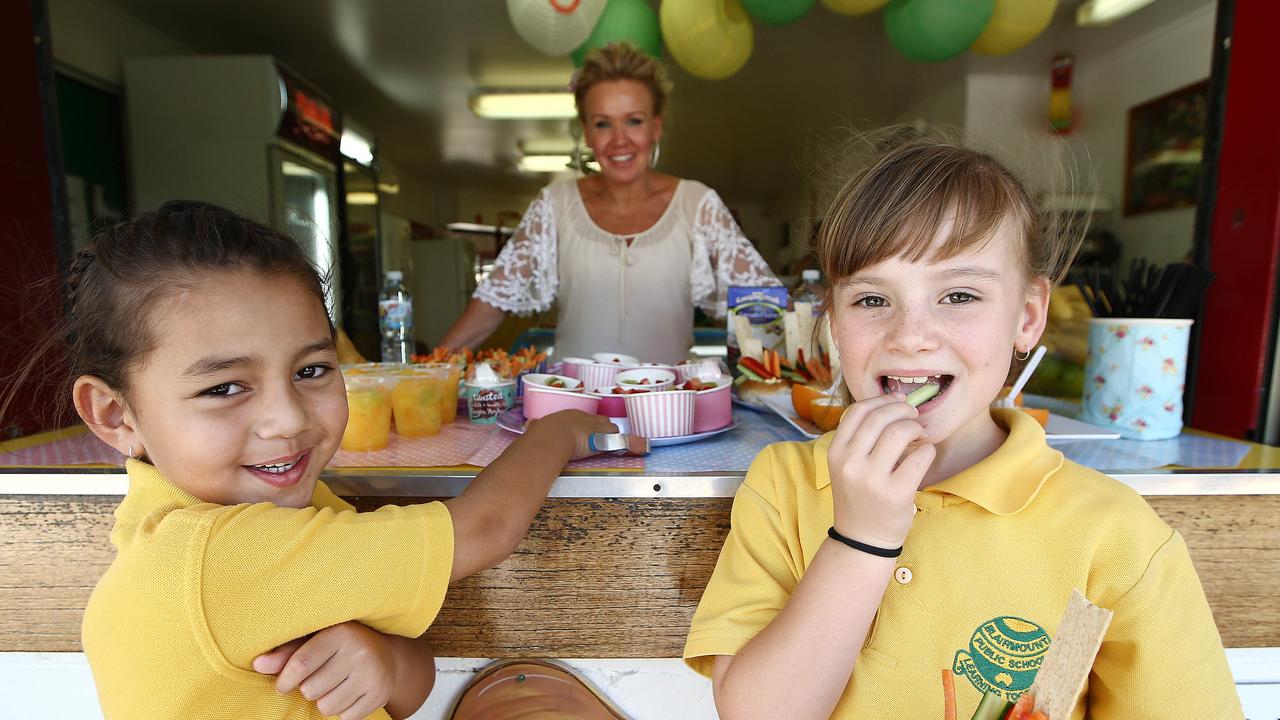Inside the Royal Melbourne Hospital trauma team’s ‘life and death’ battle
This is the team you meet on the worst day of your life. They lift a lid on what it’s really like working at a major trauma hospital, RMH, — and the patients they never forget.
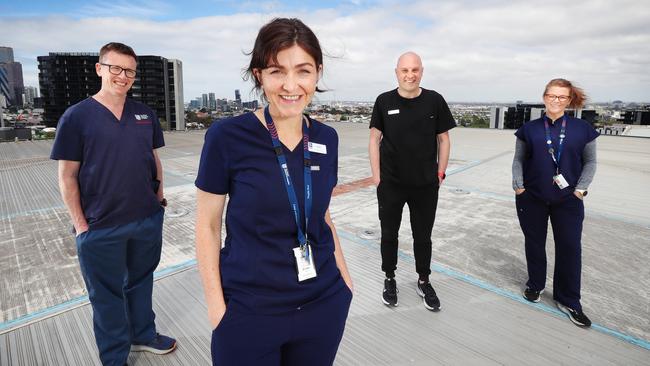
Victoria
Don't miss out on the headlines from Victoria. Followed categories will be added to My News.
They are the team that nobody really wants to meet.
But with a level head, steady hands and warm smile, they greet Victorians on what is nearly always the worst day of their lives.
Last year, Royal Melbourne Hospital treated more than 5,000 trauma patients who, typically without warning, were suddenly reliant on a team of strangers to save them.
As one of the state’s two adult trauma services, director of emergency medicine Mark Putland says “absolutely anything” is possible on a shift at the hospital.
But there’s also a pattern to the wave of patients that come through their doors.
About a third of last year’s trauma patients were motor vehicle victims, while another third were seriously hurt in a fall.
Associate Professor Mark Putland says they are often “just getting ourselves settled” when injured pedestrians, drivers and cyclists begin to arrive just after 8am, sometimes by air ambulance.
Last year, 148 patients arrived by helicopter.
For Prof Putland, this is a “privilege”, a reminder of the trust placed in this team – that an entire emergency systems’ goal is “to bring people to us”.
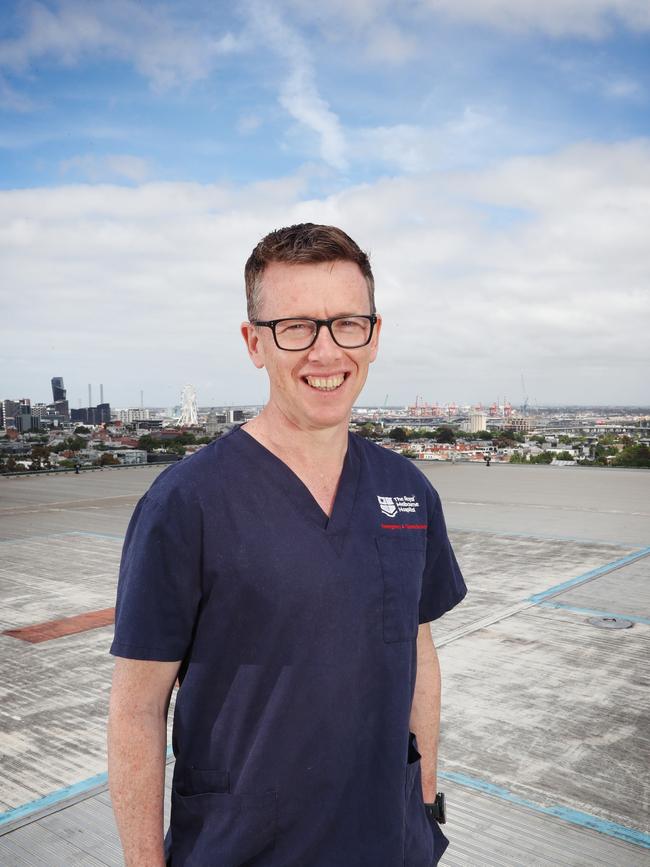
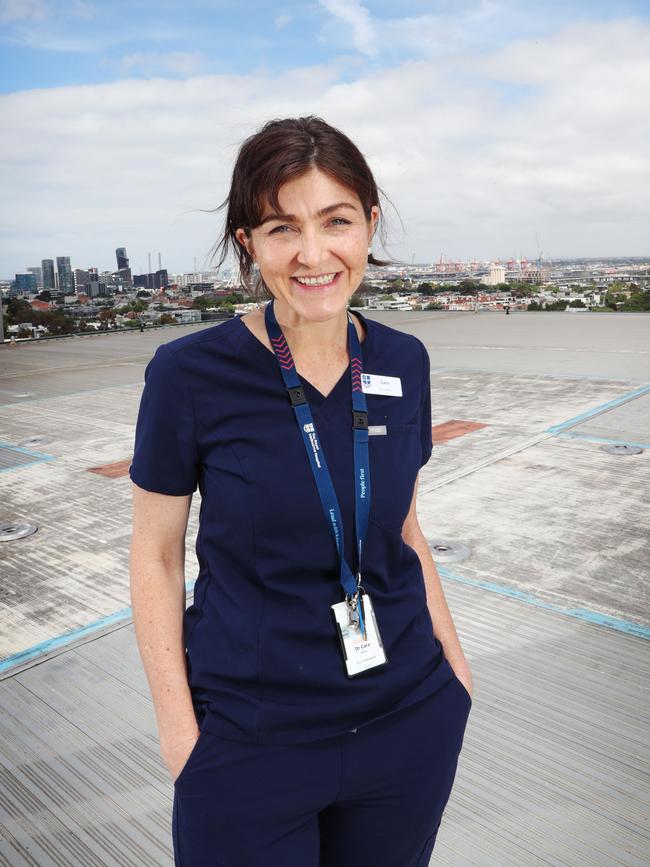
“I sometimes remind a lot of our trainees to just stop and listen to that sound of that helicopter coming on to that roof … and you should feel really proud of what you do,” he says.
“When a multimillion-dollar helicopter is landing on the roof of your building, you realise the community must value what you do.”
He says notice can range from minutes to hours, but the routine is always the same – pulling the very best team together to prepare for what is to come.
“When a person arrives, you want to know that you gave everything that you could give to them,” he says.
“There is a fantastic feeling that comes from making a positive difference to those people by putting together a team that can just do so much in such a little time and make the difference between life and death or terrible disability.”
For many trauma patients the next step is upstairs, with intensive care specialist Dr Cara Moore.
She says at its core, intensive care was a “team sport” with families often “stunned” by the sheer number of people caring for their loved one.
“The team can be enormous,” she says.
“There will be intensive care doctors and nurses, doctors from other treating teams, physios, pharmacists, dietitians, patient care assistants … ward clerks, social workers.”
She says their care goes beyond the patient, who sometimes have “20 family members in the waiting room clamouring for information”.
“The thing with trauma it’s nearly always unexpected and so unlike some of the other patients we care for in the hospital, this is nearly always out of the blue and so there’s a real stage of shock,” she says.
“They’ll often have big questions about what this means for the future and very often we can’t answer that in the early stages.
“It’s really about reassuring them that we’re doing our very best to get a good outcome.”
She says families often tell them about their patients – what they like, their hopes and dreams for their life.
“You want to be able to get them back to their family and back to their job and back to doing the activities they love, and so knowing what those things are is really important,” she says.
For families whose entire existence has been on hold, focused on nothing but the life and death battle of their loved one, leaving intensive care is something they have long hoped for.
But trauma program manager Kellie Gumm says it’s also often the first time families grapple with grief.
“One day you’re driving to work and the next day you’re in hospital for three months with a terrible injury,” she says.
“Families have to transition then from wondering whether their family member is going to live or die to then having to accept that their family member or partner or their person has had life-altering injuries that they may never recover from.”
The ward cares for a lot of patients with brain injuries, recovery from which is difficult to predict.
“One of the hardest things … is we actually just don’t know,” Ms Gumm says.
“Sometimes we think this person’s going to make a terrible recovery and patients surprise us, which is really lovely and keeps us going.”
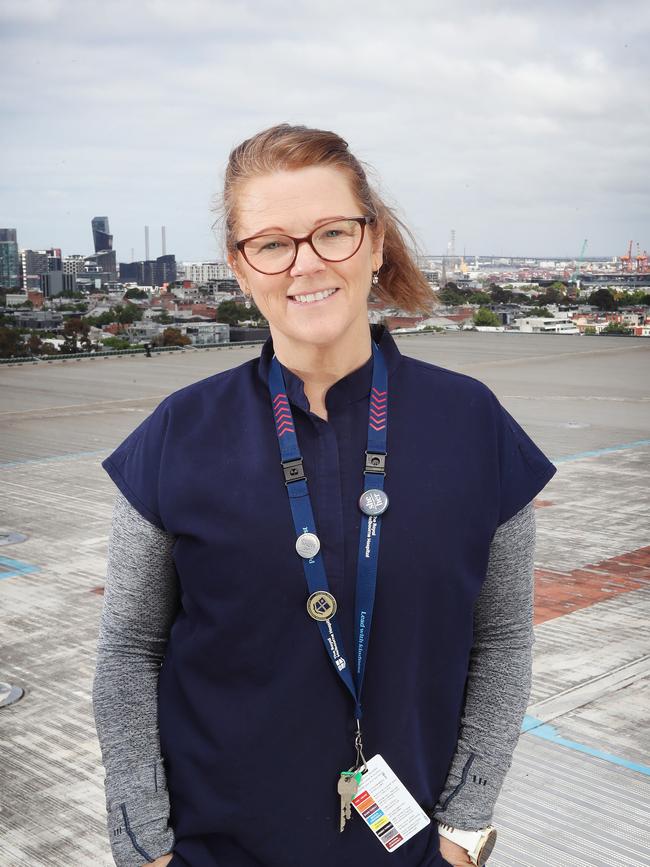
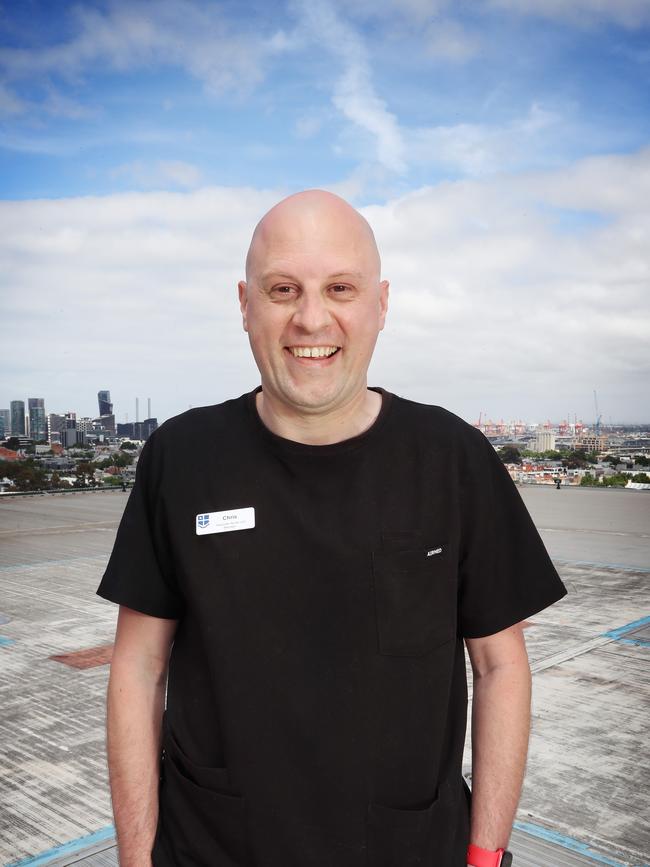
She says she wishes she could be “wrong every time” and all her patients could make a full recovery, but they never want to give them false hope.
“As they start to open their eyes and interact with the world around them, families are just … that’s what they’ve been hanging on for,” she says.
“Any improvement for them is like winning the lotto.”
With some patients hospitalised for “well over 100 days”, associate nurse unit manager Chris Mullins says the ward is about so much more than just their specialised medical skills.
He says they try to find the “little things” that bring patients joy, from footy to cooking.
“You try to bring some of those home comforts . . . within the hospital setting so it’s not a daunting experience,” Mr Mullins says.
“I try to make it as lighthearted when appropriate as possible.
“I think that goes a long way to make them feel like they can trust me and trust us.”
But sometimes it’s the patients who uplift staff.
Mr Mullins reflects on a young patient he cared for earlier this year, who had “life-changing injuries” from a serious motor vehicle accident and was in hospital for more than 10 weeks.
“They were so positive and optimistic about the journey ahead and the support from their mother and father not just towards them but towards the staff, it just made me so proud.”
Other patients stick in his mind for more difficult reasons.
Mr Mullins says sometimes the routine trauma scans find a cancer or issue a patient — in the hospital for a car accident or ladder fall — didn’t know they have.
“If they had been out in the community, it might have been too late,” he says.
For Ms Gumm, it’s a memory from her early nursing days of the man who had just come off his motorbike and his nine month pregnant wife; the young people with “devastating injuries” before their life has truly begun, the family violence victims who – despite their efforts – go back home.
Prof Putland says the people they can’t save “are sometimes the ones that stick with us the most”.
But he tries to remember those who remind him “why it’s worth doing … because you can actually turn some people around”.
For him, that’s the young social worker who had an aneurysm and — thanks to a rapid response from the paramedics who rushed her to hospital to the neurosurgeons who were ready and waiting — not only survived but had a “remarkable” recovery.

The best stories are when the patients come back to the hospital to surprise the staff, a smile on their face and a thank you on their lips.
Dr Moore says they don’t know how a lot of their patients’ rehabilitation goes, which can be “a blessing and a curse”.
“But we see enough that come back that it motivates us to do our jobs and keep trying to achieve that for the next one.
“Sometimes you cannot fathom that, that severely injured person is then the one who comes back a year later looking pretty well.
“We do an extraordinary amount of good here.”
Mr Mullins says it is an “unbelievable” and “phenomenal feeling” to see them progress from “ arguably one of the worst days of their lives”.
“I’m so proud when they come in,” he says.
For Ms Gumm, it’s the young girl they cared for who emails them updates on her rehabilitation, the Dutch backpacker who was shot on Bourke St in 2007 and never forgot the RMH’s work or the patients with brain injuries who couldn’t walk or talk when they first left and make miraculous recoveries.
“Every time he came back to Australia, he came back to the ward and it was just so lovely to see him,” she says.
“Other patients who had brain injuries and … to have them come back walking in, smiling, it makes you feel like all your hard work is worthwhile.”
But how does one cope when the story has a different ending?
The team talks of their camaraderie, finding outlets outside of work and – importantly – speaking up on the days it does feel like a bit too much.
It’s knowing that you’re prepared for everything that comes through the door, it’s – in the words of Prof Putland – running through a drill one more time for the future somebody whose life it will save.
He remembers a husband and two young daughters whose wife and mother was terribly injured in a freak car accident.
Despite an “absolutely perfect trauma resuscitation response”, she could not be saved.
“I still find it very hard to think about them,” he says.
He says knowing they “gave that family the best possible chance”, that there was nothing they would do differently if given the chance, enables them to keep going.
“You’re able to look at them honestly and say we did everything we possibly could have done.
“The knowledge that you have given them the best of what Victoria could offer in those critical moments is really what lets you sleep at night.”
It’s about holding on to the times where families get the happy ending they try so hard to give all of their patients.
“When you get to walk in and tell them that actually things are looking okay, it was touch and go but … he or she is going to be all right,” Prof Putland says.
“That’s an extraordinary moment.”
More Coverage
Originally published as Inside the Royal Melbourne Hospital trauma team’s ‘life and death’ battle




